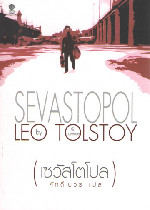
The flush of morning has but just begun to tinge the sky above Sapun Mountain; the dark blue surface of the sea has already cast aside the shades of night and awaits the first ray to begin a play of merry gleams; cold and mist are wafted from the bay; there is no snow—all is black, but the morning frost pinches the face and crackles underfoot, and the far-off, unceasing roar of the sea, broken now and then by the thunder of the firing in Sevastopol, alone disturbs the calm of the morning.
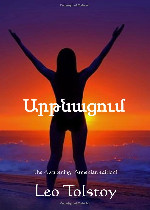
This masterful novel is a religious fable of sorts, written by the gifted Russian author Leo Tolstoy as a means of shedding light on the hypocrisy inherent in many aspects of organized religion in the nineteenth century. The book follows the plight of Russian aristocrat Dmitri Ivanovich Nekhlyudov as he seeks absolution -- both in the church and in his own psyche -- for a sin he committed years earlier.
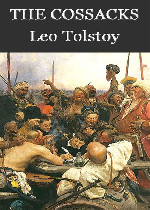
The Cossacks (Russian: Казаки [Kazaki]) is a short novel by Leo Tolstoy, published in 1863 in the popular literary magazine The Russian Messenger. It was originally called Young Manhood. Both Ivan Turgenev and the Nobel prize-winning Russian writer Ivan Bunin gave the work great praise, Turgenev calling it his favorite work by Tolstoy. Tolstoy began work on the story in August 1853. In August 1857, after having reread the Iliad, he vowed to completely rewrite The Cossacks.
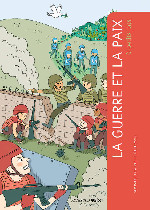
La guerre et la paix(战争与和平) 立即阅读
Guerre et Paix ou La Guerre et la Paix (en russe : Война и мир, Voïna i mir) est un roman de l'écrivain russe Léon Tolstoï. Publié en feuilleton entre 1865 et 1869 dans Le Messager russe, ce livre narre l’histoire de la Russie à l’époque de Napoléon Ier, notamment la campagne de Russie en 1812. Léon Tolstoï y développe une théorie fataliste de l’histoire, où le libre arbitre n’a qu’une importance mineure et où tous les événements n’obéissent qu’à un déterminisme historique inéluctable.
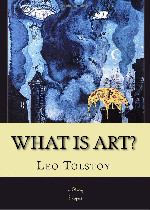
What is art? (Russian: Что такое искусство? Chto takoye iskusstvo?) is a book by Leo Tolstoy. It was completed in Russian in 1897 but first published in English due to difficulties with the Russian censors. Tolstoy cites the time, effort, public funds, and public respect spent on art and artists as well as the imprecision of general opinions on art as reason for writing the book. In his words, "it is difficult to say what is meant by art, and especially what is good, useful art, art for the sake of which we might condone such sacrifices as are being offered at its shrine".
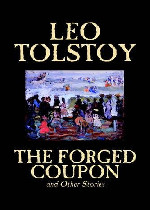
The Forged Coupon and Other Stories(伪造的证券和其他故事) 立即阅读
The Forged Coupon (Russian: Фальшивый купон, Fal'shivyi kupon) is a novella in two parts by Leo Tolstoy. Though he first conceived of the story in the late 1890s, he did not begin writing it until 1902. After struggling for several years, he finally completed the story in 1904; however, it was not published until some of Tolstoy's shorter works were collected and anthologized after his death in 1910.
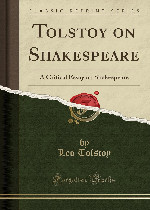
Tolstoy on Shakespeare(托尔斯泰论莎士比亚) 立即阅读
Mr. Crosby's article on Shakespeare's attitude toward the working classes suggested to me the idea of also expressing my own long-established opinion about the works of Shakespeare, in direct opposition, as it is, to that established in all the whole European world. Calling to mind all the struggle of doubt and self-deceit,—efforts to attune myself to Shakespeare—which I went through owing to my complete disagreement with this universal adulation, and, presuming that many have experienced and are experiencing the same...
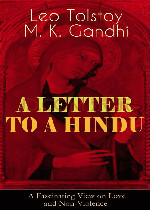
A Letter to a Hindu(给一个印度人的信) 立即阅读
"A Letter to a Hindu" (also known as "A Letter to a Hindoo") was a letter written by Leo Tolstoy to Tarak Nath Das on 14 December 1908. The letter was written in response to two letters sent by Das, seeking support from the famous Russian author and thinker for India's independence from British colonial rule. The letter was published in the Indian newspaper Free Hindustan. The letter caused the young Mohandas Gandhi to write to the world-famous Tolstoy to ask for advice and for permission to reprint the Letter in Gandhi's own South African newspaper, Indian Opinion, in 1909.
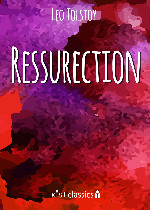
Resurrection (Russian: Воскресение, Voskreseniye), first published in 1899, was the last novel written by Leo Tolstoy. The book is the last of his major long fiction works published in his lifetime. Tolstoy intended the novel as an exposition of the injustice of man-made laws and the hypocrisy of the institutionalized church. The novel also explores the economic philosophy of Georgism, of which Tolstoy had become a very strong advocate towards the end of his life, and explains the theory in detail.